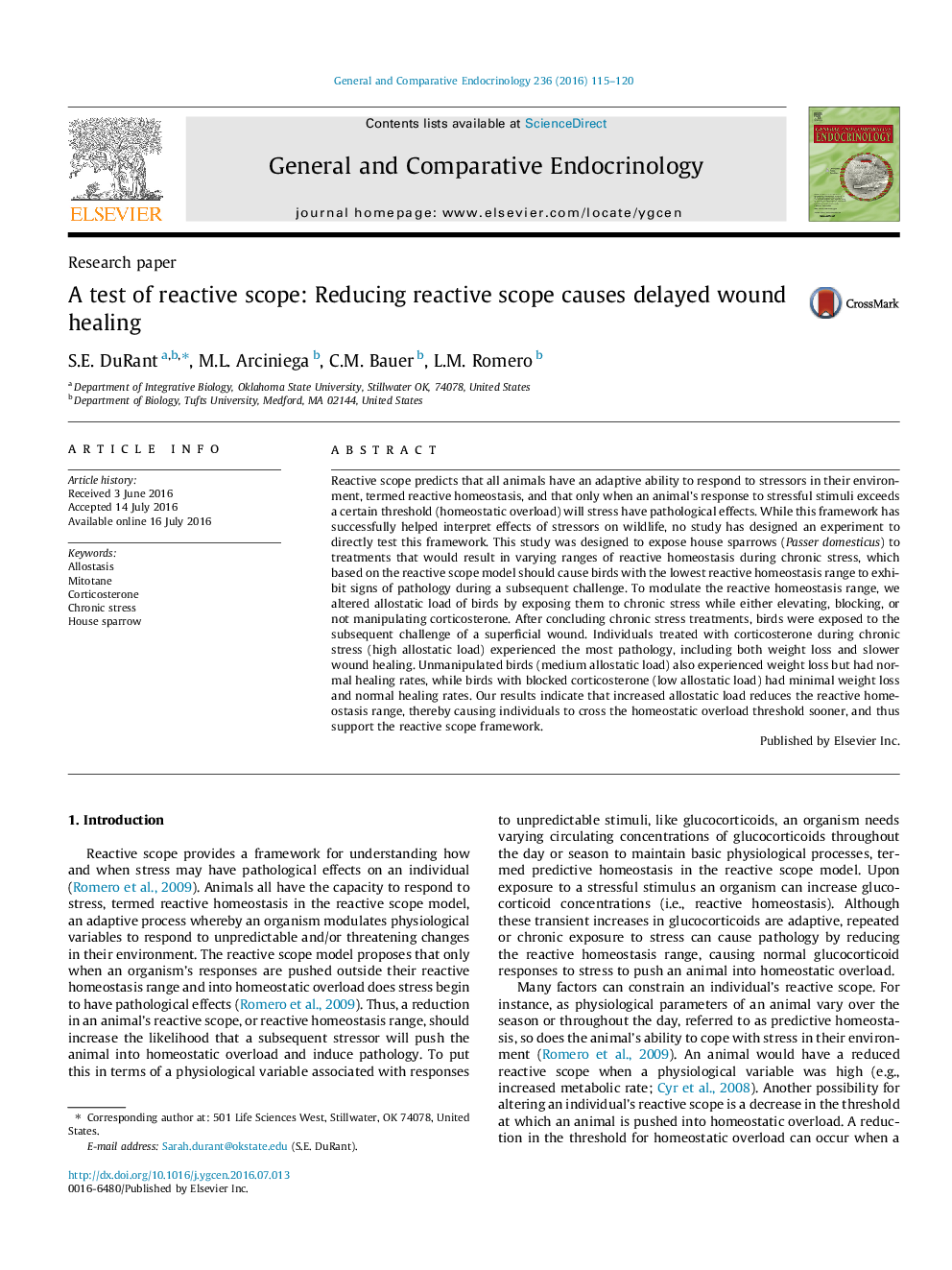| Article ID | Journal | Published Year | Pages | File Type |
|---|---|---|---|---|
| 5900751 | General and Comparative Endocrinology | 2016 | 6 Pages |
Abstract
Reactive scope predicts that all animals have an adaptive ability to respond to stressors in their environment, termed reactive homeostasis, and that only when an animal's response to stressful stimuli exceeds a certain threshold (homeostatic overload) will stress have pathological effects. While this framework has successfully helped interpret effects of stressors on wildlife, no study has designed an experiment to directly test this framework. This study was designed to expose house sparrows (Passer domesticus) to treatments that would result in varying ranges of reactive homeostasis during chronic stress, which based on the reactive scope model should cause birds with the lowest reactive homeostasis range to exhibit signs of pathology during a subsequent challenge. To modulate the reactive homeostasis range, we altered allostatic load of birds by exposing them to chronic stress while either elevating, blocking, or not manipulating corticosterone. After concluding chronic stress treatments, birds were exposed to the subsequent challenge of a superficial wound. Individuals treated with corticosterone during chronic stress (high allostatic load) experienced the most pathology, including both weight loss and slower wound healing. Unmanipulated birds (medium allostatic load) also experienced weight loss but had normal healing rates, while birds with blocked corticosterone (low allostatic load) had minimal weight loss and normal healing rates. Our results indicate that increased allostatic load reduces the reactive homeostasis range, thereby causing individuals to cross the homeostatic overload threshold sooner, and thus support the reactive scope framework.
Related Topics
Life Sciences
Biochemistry, Genetics and Molecular Biology
Endocrinology
Authors
S.E. DuRant, M.L. Arciniega, C.M. Bauer, L.M. Romero,
